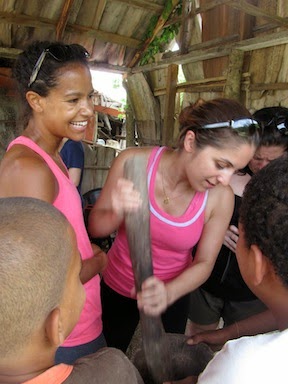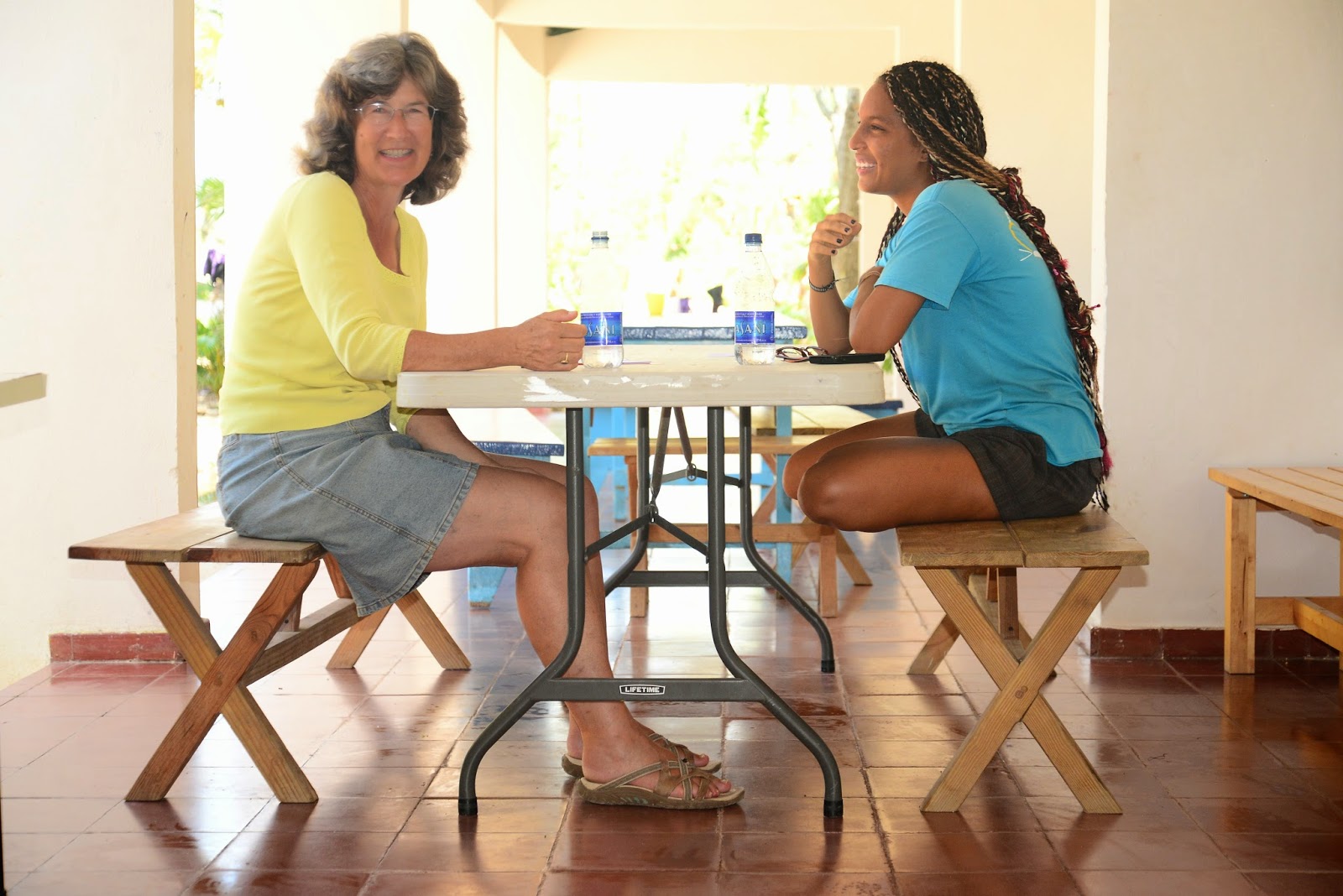By Alex Zinnes, Friends School of Atlanta
I teach 7th and 8th grade World Studies at the Friends School of Atlanta. This past summer, I co-facilitated Nobis World's trip to the Dominican Republic. A major highlight for me was visiting a small, family-owned farm and seeing first-hand their cacao production.
One of my favorite ways to connect kids to the content areas I teach as well as expose them to substantive topics of power, economics, labor practices, social justice, and global interdependence, is to examine product history. Students have relationships with their material world in hugely visceral ways. They also intuit issues of fairness and equity or injustice and inequity with a profound immediacy.
In our unit on Latin America and the Caribbean, we look at our role as American consumers of bananas, cocaine, cut flowers, t-shirts, sugar, coffee, and cacao, the richly bitter ingredient that makes chocolate. This year, Halloween landed on a Friday. It seemed like an opportune time to introduce my students to a short mini-lesson leveraging my hands-on experience with Nobis about cacao production.
I started off discussing very briefly about chocolate's history to place this product native to MesoAmerica in a global context. Then I discussed the bittersweet reality of the cacao farmers who pick the ingredient that forms the basis of chocolate.
As it turns out, about 70% of the world's cacao is harvested in West Africa: Cote d'Ivoire and Ghana. As an industry, cacao production is rife with abusive labor practices including particularly egregious uses of child labor and child trafficking. While the chocolate industry has made incremental progress in taking meaningful action to address these concerns, it's safe to say that the vast majority of the industrial chocolate contains cacao picked by children or laborers who worked in oppressive conditions. See
http://responsiblecocoa.com/ for more information.
Finally, I showed my students photos and videos taken from my experience on the small farm in the DR bringing to life the steps of transforming the goopy, white fresh cacao seedpods into the dark and richly fragrant toasted ones that are the key ingredient in chocolate. Students saw our Dominican hosts cutting down the pods, drying the seeds on cloths spread in the strong sunlight, toasting them over a fire in a traditional rural outdoor kitchen "shed", lightly burning our fingers as we removed the papery skin from the seed pods, and taking turns pounding the seeds with a large, wooden mortar and pestle. Our hosts then transformed the freshly pounded cacao pods into a redolent, spicy, and sweet drink the consistency of tea. While I could bring the sights and sounds of the experience to my students, sadly, I could not document the smell! It was heavenly!
There's nothing like incorporating eating into your lesson! Students feel you taking care of them and connect to the content in an even deeper way. While in the DR I purchased a pound or so of the toasted seed pods as well as several 8 inch long cylinders of the seeds pods after they had been pounded into a mashed consistency, the cacao fat having fully expressed in the process. I let my students try the seed pods, most expressing repulsion at the strong, bitter taste. And then the surprise, I brought out a thermos and pored each of them a few sips of the chocolate drink. Before we drank, I said we needed to take a moment to reflect on all the chocolate they would consume that night and the nights to come as they indulged on Halloween candy and to think of the folks who picked the cacao that went into the Snickers and M&M's. I reminded them that kids their age probably had a hand in picking the cacao. We spent a moment in silence before we drank. They enjoyed the complex flavors and the scents. A student said, "This is probably the only ethical chocolate we will eat today."
And while I had them at this moment I made the pivot. "I don't want you to feel guilty, necessarily, about the chocolate you'll get tonight, but I do want to raise your awareness. Maybe next year you can encourage your family to only give out fair trade chocolate where everyone who had a hand in it was treated fairly."
My students nodded, knowing full well what fair trade meant. "Won't that be more expensive?" "Yeah, how much more?" "Will people be willing to change what they do for the better if it means spending more money?" "Would my family?" "Would I?"
And then one more pivot. I help coordinate a program called Street Meals to feed a lunch every week to 400 men who experience homelessness at a shelter in downtown Atlanta. Every holiday season, my community goes all out to load up 500 backpacks with essentials and goodies. I said to my students, "Listen, you all know about my backpack effort for Holiday Street Meals, right? One thing you could do to reclaim all that bitter chocolate and give it some more sweetness is donate your leftovers to the guys at the shelter." I eventually asked my whole school community to donate their leftovers and probably yielded over 100 pounds of candy!

This is what it looks like to create a mini-unit centered on Nobis Big Ideas one that gets kids thinking about themselves not as bit players in the world, but rather as central actors empowered with agency to make the world into a more just place. This is how you leverage the experience of international travel into meaningful classroom learning opportunities that connect kids to their lives in a more considered and considerate way.








